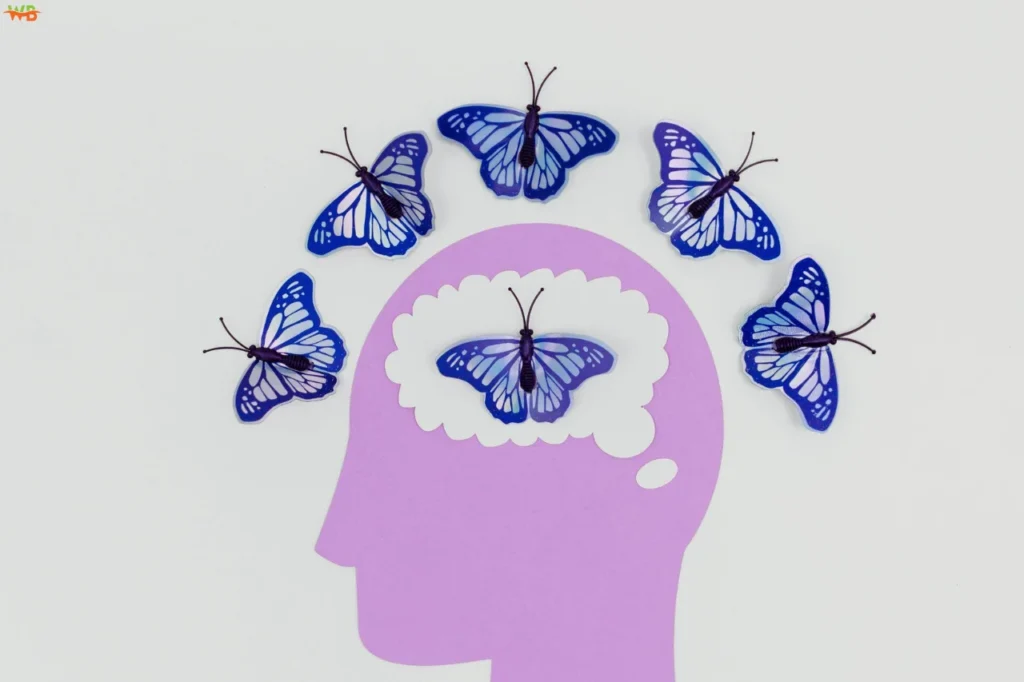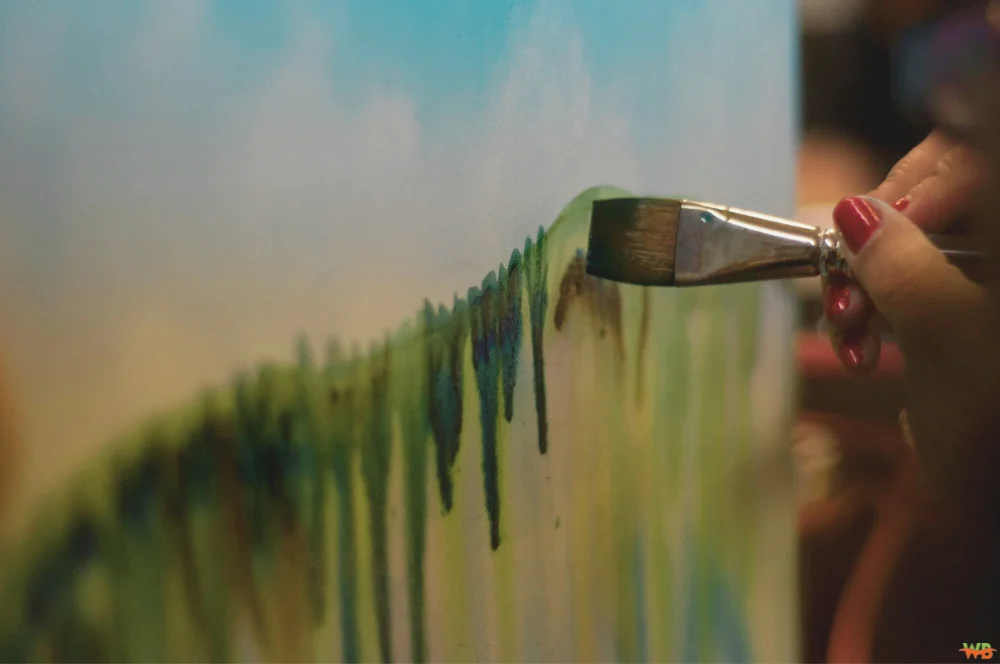
While art has traditionally been recognized for its capabilities in enhancing creativity and self-expression, it is also valuable for mental health. Art, whether being created or appreciated, acts to reduce stress, instill mindfulness, and generally improve emotional well-being. This article is going to look at some of the ways that art can be an effective tool to help individuals improve their mental health by offering practical ways to implement it into daily life.
The Connection Between Art and Mental Well-Being
There is a deep connection between art and mental well-being grounded in the way that creativity engages the mind and emotions. The creation and observation of art activate the same parts of the brain involved in the processing of pleasure, memory, and emotion, which can have an anxiety-reducing effect and help improve focus and create a sense of accomplishment.
Art allows the expression of feelings, which may be hard to express with words, and this could be an outlet for stress and tension. Painting or drawing involves mindfulness, wherein one can engage oneself in the present moment and temporarily forget about one’s concerns. In fact, research has shown that even passive activities, such as viewing art in a gallery or at home, can elevate mood and promote a feeling of peace.
In other words, art nurtures emotional stability and provides a state of balance to the mind.
Key benefits of art for mental health:
- Reduces stress and anxiety
- Encourages emotional release
- Develops mindfulness and concentration
- Improves overall mood and emotional resilience.
Transforming Your Home with Art Décor
Transforming your home with art décor is an easy yet effective way to create a space that nurtures mental well-being. The right choice of artwork can influence mood, reduce stress, and foster a feeling of harmony. For instance, blue artwork, such as seascapes, abstract pieces, or paintings with serene skies, is known for its calming properties. Colorful artwork, such as pieces containing yellows or reds, will energize and uplift and can be placed in living areas or workspaces.
Apart from paintings, sculptures, wall hangings, and even decorative textiles such as tapestries or rugs give character and depth to your home. Incorporating nature-inspired art, such as botanical prints or landscapes, helps to bring a sense of calm and outdoors into your home. Besides, minimalist black-and-white art can provide clarity and minimalism, which is just perfect in busy environments to reduce the quantity of visual noise. Moreover, pieces with motivational phrases or symbolic shapes can encourage positivity and personal growth in one’s life and can be a great addition to your home office or entryways.
Benefits of art décor for mental health:
- Helps create a tranquil ambiance that reduces stress.
- Insinuates creativity and keeps the energy levels up.
- Reflects personal identity-promoting emotional attachment and ease.
- Encourages positivity and mindfulness through meaningful designs.
- Enhances focus and clarity by reducing visual clutter in living spaces.
Art as a Gateway to Self-Discovery
Art serves as a powerful gateway to self-discovery by allowing individuals to explore their emotions, thoughts, and inner worlds in a nonjudgmental way. The act of creating art can reveal aspects of yourself that might be difficult to express verbally, providing a deeper understanding of your feelings and experiences. Whether through painting, journaling, or sculpting, the creative process encourages introspection and helps uncover hidden aspects of your personality or unresolved emotions.
Art can also let you tap into your subconscious. For example, an abstract creation or some sort of doodling might express your mental state and let you understand something about your perspective. In creating, you make a visual or physical record of yourself that allows deeper self-awareness and growth.
How Art Fosters Self-Discovery:
- Reveals subconscious thoughts and emotions: The creative process brings to the surface feelings that are buried deep inside, helping you to identify emotions you might not have recognized. Emotional growth and clarity are fostered by this increased awareness.
- Encourages reflection and introspection: Working on an art project encourages you to reflect upon yourself. It is a quiet place to think about your life, experiences, and hopes in a meaningful manner.
- Helps process complex feelings: The creation of art allows for the safe processing of difficult emotions. You can understand and explore, through visual or tactile expression, thoughts that might feel overwhelming.
Creating Art as a Form of Self-Care

It is an act of self-care, allowing individuals to engage in relaxation, the release of emotions, and calm in the midst of a chaotic world. Whether it be painting, sketching, or crafting, there are many ways to tap into creativity. Amongst all, painting by numbers is one of the most popular choices for beginners or those who want to feel structured while relaxing. Brands like Number Artist offer high-quality paint-by-number kits, which provide an easy and enjoyable way to unwind while creating beautiful artwork.
Other creative releases, such as journaling with artwork, collage work, or pottery, could also offer mindfulness and an outlet of your thoughts. Then there’s watercolor painting, the most soothing one, in which you’re free to let your creativity take over; or adult coloring books, for those searching for brief, relaxing time with art. Exploring all these media will help you find which one fits your emotions and feelings best.
Benefits of doing art:
- Relaxes and reduces stress.
- Encourages mindfulness and focus.
- Provides an outlet for emotions and self-expression.
- Boosts confidence through the joy of completing a creative project.
Experiencing Art in Nature for Mental Health
The experience of art in nature combines creativity and calm in a way that efficiently supports mental health. Being amidst nature is calming and, therefore, evokes an artistic appreciation of nature. Outdoor sculptures, murals, or temporary installations offer the opportunity to engage with art in an open, serene environment promoting mindfulness and reducing stress.
Making art in nature, whether through landscape sketching or arranging natural materials into patterns, allows for an increased sense of connectedness to the world. It grounds your thoughts and provides a new perspective, further allowing emotional balance. The beauty of nature combined with the process of creation can stir up feelings of inspiration and joy, which in itself is a strong method of relaxation and self-expression.
Benefits of experiencing art in nature:
- Enhances mindfulness by integrating creativity into outdoor exploration.
- Allows relaxation in a peaceful and natural environment.
- Inspires a deeper connection with the world and encourages emotional clarity.
Conclusion: Art as a Tool for Better Mental Health
Art is a strong tool for better mental health, offering an immense number of ways to relax, express emotions, and nurture a sense of well-being. Whether through the decoration of your home with calming pieces, creating art to explore your inner world, or connecting with nature through artistic experiences, art provides a unique path toward self-discovery and emotional balance. It helps one get in touch with instant moments of mindfulness, releases tensions, and builds personal development. Take a first move towards discovering how art might help to complement your mental health journey.

I’m Salman Khayam, founder of Wellbeing Junction. I synthesize trusted information from research and expert guidance to create clear articles across health, wellness, and lifestyle topics.
Disclaimer: Content is for informational purposes only and is not medical advice. Consult a qualified expert regarding personal health or specialized questions.
Discover more from Wellbeing Junction
Subscribe to get the latest posts sent to your email.

